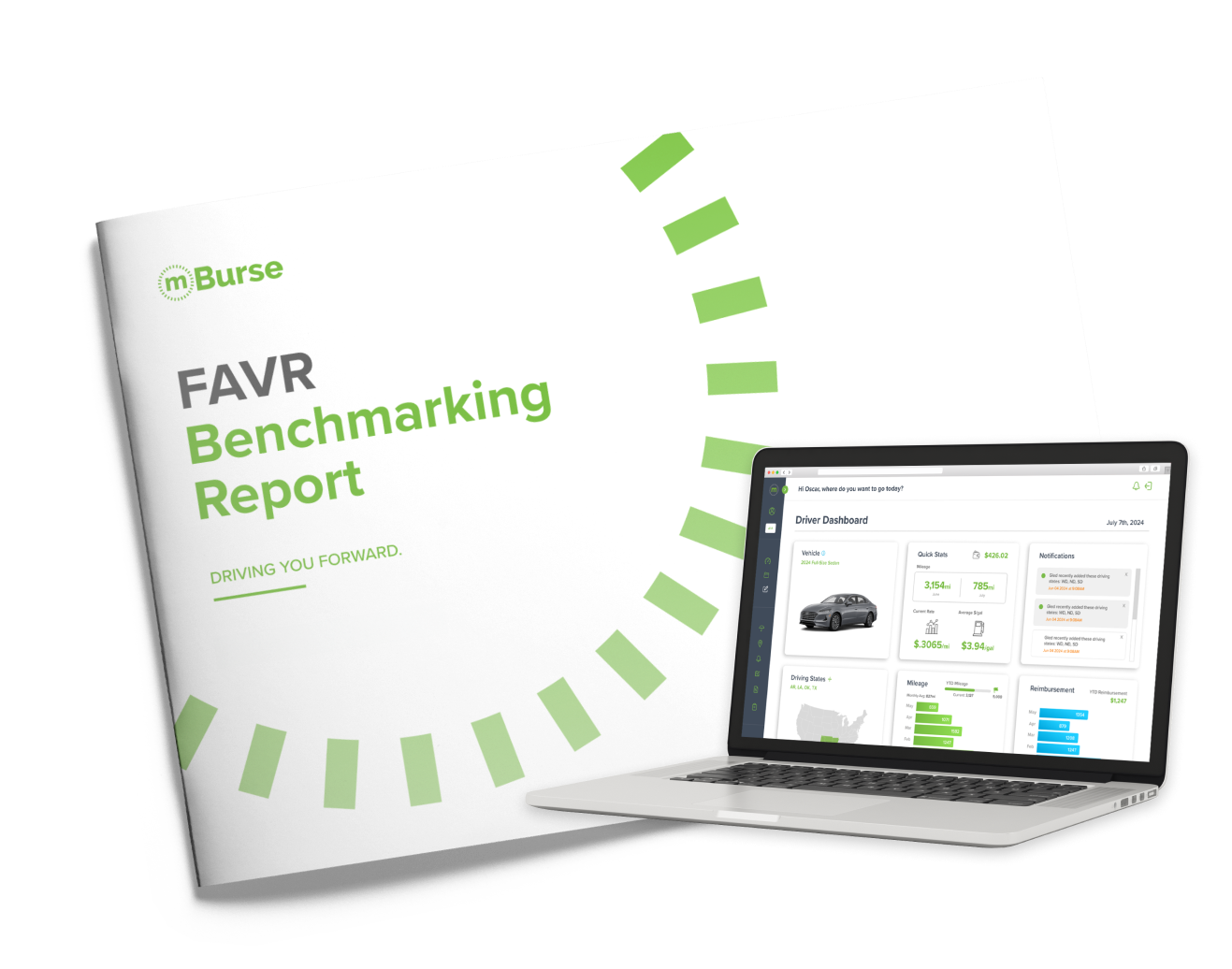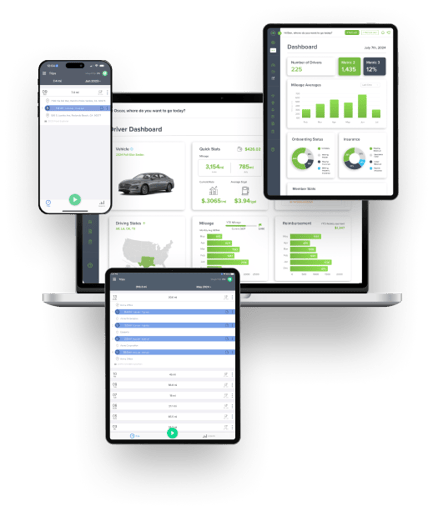Save tax dollars with a Fixed & Variable Rate Program
Get the benefits of a traditional car allowance (without the taxes). Save your company and people money. And stay competitive.

Pay your people fairly with a mBurse program

What is FAVR?
The fixed and variable rate reimbursement, or FAVR, pays a fixed monthly car allowance and variable mileage rate based on each driver’s costs.
100% tax-free vehicle reimbursement
IRS and labor-code compliant
Keeps pace with out-of-pocket expenses
Level the playing field with the Right Program
Get away from drivers questioning the fairness of their reimbursement. Pay them fairly based on the vehicle, miles driven, and local costs.
Company and driver tax savings
Competitive vehicle reimbursement
Employee satisfaction and retention

How does FAVR reimbursement work?
Reimburse based on your drivers’ costs instead of paying everyone the same rate
Standard vehicle
Choose the best vehicle class for the job: a sedan, SUV, or truck. The reimbursement is based on this vehicles costs.
Local costs
Reimburse your drivers differently depending on where they live — whether in California, Texas, or anywhere else in the country.
Territory size
Pay your people for the miles they drive in a specific region, so you can reimburse for business trips only and stay IRS compliant.
How is FAVR calculated?
Fixed costs
Pay a car allowance at regular intervals — like you would a paycheck.
Insurance
License & registration
Automobile taxes
Depreciation

Variable costs
Business mileage is reimbursed based on the operating costs.
Gas
Oil
Maintenance
Tires

mBurse administration
How 100s of companies save
& put money in their people’s pockets
"We created a win-win scenario"
"Transitioning from a taxable car allowance to mBurse was a great decision. We are paying our employees more without increasing costs."
Robert S
Vice President

“They make reimbursing easy”
“We have been with mBurse since 2015; the reimbursement process is easy. Our field team records mileage, and we approve it; it is simple.”
Joanne R.
Director
“It makes sense now”
"I was skeptical at first. I wasn't excited about using an app to track mileage, and I thought the program had too many rules. After the first month, I couldn't have been more wrong!"
Randy L.
Driver on Program
“Saves tax dollars”
“mBurse saves us tax dollars. It saves our people tax dollars, and it gets more money in our people's pockets.”
Andy M.
SVP, Engle Martin
Save with mBurse in 3 easy steps

Step 1: Program design
Eliminate guesswork
Partner with experts so you can enjoy the tax benefits without the work. Reimburse your drivers fairly based on real-time data — not Google results and guesses.
Data-backed reimbursement baselines
Equitable by design
Responsive partners

Step 2: Program development
Customize your program — the easy way
Take complex calculations off your plate. Get a robust program that’s easy to manage, scales with your company, and supports your growth.
Accurate rates based on data models
Customized vehicle reimbursement rates
Flexible program design & software

Step 3: Program administration
Save tax dollars. Gain peace of mind
Set your people up for success with intuitive tools, unlimited training, and driver-safety checks. Get expert support in minutes. Stay IRS compliant and save on taxes.
Easy mileage tracking app & admin dashboard
Integrations with major payment solutions
Peace-of-mind program management
Companies save thousands
with mBurse Plan administration
yearly savings 237% ROI
National sales organization
yearly savings 398% ROI
Food & beverage company
yearly savings on fuel cards alone
Manufacturing sales company
Find out how much you could save with FAVR
Get a free Benchmarking Report revealing:
Your company and drivers’ savings
Your return on investment
Your employee benefits

FAVR FAQ
What is FAVR?
It is an acronym for "fixed and variable rate" reimbursement. FAVR, pronounced "favor," or ˈfāvər/(FAVOR), is a vehicle reimbursement program sanctioned by IRS tax law. If the guidelines are followed, the payments are tax-free.
What are the FAVR employee guidelines?
Employees should follow the insurance, vehicle, and mileage guidelines to qualify for tax-free reimbursements.
What happens if an employee doesn't follow the FAVR guidelines?
The maximum they can receive is the equivalent IRS mileage rate. Reimbursements exceeding the IRS mileage rate are considered end-of-the-year imputed income.
What is the FAVR minimum mileage guideline?
5,000 annual business miles or a prorated equivalent based on the start date to qualify for tax-free reimbursements.
How long does it take to get started with FAVR?
You can start in minutes. Simply fill out the short form on the contacts page, and a FAVR expert will contact you within a business day.
Does mBurse provide training and support?
Yes. Transition seamlessly to a FAVR program with a free online academy, live training sessions, and unlimited expert support.
Uncover tax savings and efficiency from your program
Get a FAVR Demo
